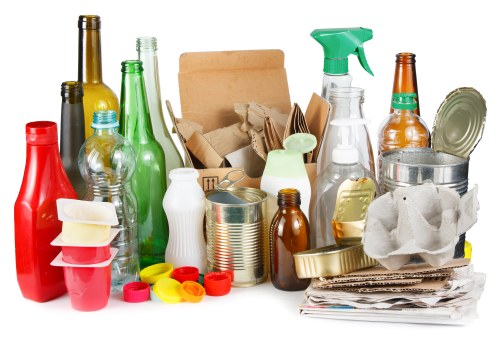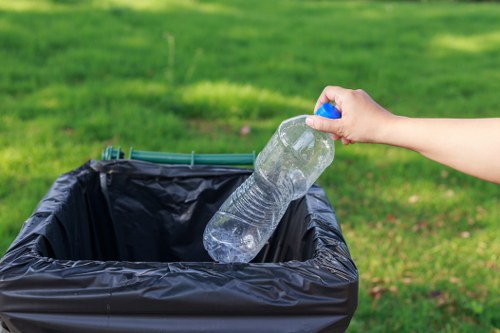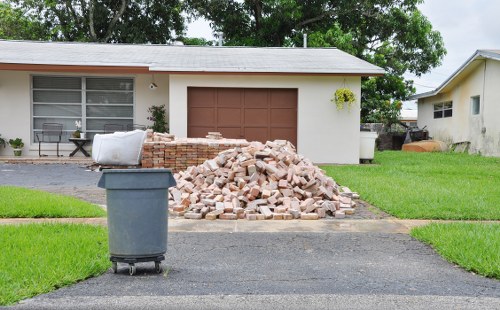Effective Waste Disposal Strategies in Toms Waste
Introduction to Waste Disposal

Waste disposal is a critical aspect of environmental management, ensuring that the byproducts of human activity do not harm our ecosystem. In Toms Waste, implementing effective waste disposal strategies is essential for maintaining a clean and sustainable environment.
With increasing urbanization and industrial activities, the volume of waste generated has surged, necessitating robust systems for collection, processing, and disposal. Toms Waste has been at the forefront of addressing these challenges, adopting innovative approaches to manage waste efficiently.
Understanding the various methods of waste disposal and their impact on the environment is crucial for both individuals and businesses. This article delves into the waste disposal practices in Toms Waste, highlighting key strategies, benefits, and the role of the community in fostering a greener future.
Types of Waste Managed by Toms Waste

Toms Waste handles a diverse range of waste types, each requiring specific disposal methods to minimize environmental impact. The primary categories include:
- Residential Waste: Household garbage, including organic and inorganic materials.
- Commercial Waste: Waste generated by businesses, such as packaging materials and office waste.
- Industrial Waste: Byproducts from manufacturing processes, often requiring specialized handling.
- Hazardous Waste: Items that pose significant health or environmental risks, including chemicals and medical waste.
By categorizing waste, Toms Waste ensures that each type is processed appropriately, adhering to safety standards and environmental regulations.
Waste Collection Methods in Toms Waste

Efficient waste collection is the cornerstone of effective waste management. Toms Waste employs a combination of methods to ensure seamless collection:
- Scheduled Pickups: Regularly timed collections for residential and commercial areas.
- Drop-off Centers: Designated locations where individuals can dispose of specific waste types.
- Recycling Programs: Initiatives to separate recyclable materials at the source, reducing the overall waste volume.
- Organic Waste Composting: Converting biodegradable waste into compost for agricultural use.
These methods not only streamline the disposal process but also promote recycling and waste reduction, aligning with sustainable practices.
Advanced Waste Processing Techniques

Toms Waste utilizes state-of-the-art technologies to process waste efficiently. Some of the advanced techniques include:
- Incineration: Burning waste at high temperatures to reduce its volume and generate energy.
- Landfilling: Safe disposal of non-recyclable waste in designated landfill sites with measures to prevent contamination.
- Mechanical Biological Treatment (MBT): Combining mechanical separation and biological processes to treat mixed waste.
- Pyrolysis: Decomposing organic materials at elevated temperatures in the absence of oxygen.
Implementing these techniques allows Toms Waste to manage waste more effectively while recovering valuable resources and minimizing environmental impact.
Environmental Impact and Sustainability

Waste disposal practices have significant implications for the environment. Toms Waste is committed to sustainability by:
- Reducing Landfill Usage: Minimizing the reliance on landfills through increased recycling and waste diversion.
- Energy Recovery: Harnessing energy from waste through incineration and other processes.
- Promoting Circular Economy: Encouraging the reuse and recycling of materials to create a closed-loop system.
- Carbon Footprint Reduction: Implementing practices that lower greenhouse gas emissions associated with waste management.
These initiatives not only protect the environment but also contribute to the overall health and well-being of the community.
Community Involvement and Education
Engaging the community is vital for the success of waste disposal programs. Toms Waste actively involves residents and businesses through:
- Educational Campaigns: Raising awareness about the importance of proper waste disposal and recycling.
- Workshops and Seminars: Offering training sessions on waste segregation and sustainable practices.
- Incentive Programs: Providing rewards for participation in recycling and waste reduction initiatives.
- Collaborations with Local Organizations: Partnering with schools, nonprofits, and businesses to promote environmental stewardship.
By fostering a culture of responsibility and sustainability, Toms Waste ensures community members are active participants in waste management efforts.
Challenges in Waste Disposal
Managing Increasing Waste Volumes
The rapid growth in population and industrial activities has led to a surge in waste generation, posing significant challenges:
- Capacity Constraints: Existing facilities may struggle to handle the increasing volume of waste.
- Resource Allocation: Ensuring adequate funding and resources for waste management infrastructure.
- Technological Limitations: Adapting to new waste types and finding effective processing methods.
Environmental Concerns
Improper waste disposal can lead to severe environmental issues:
- Pollution: Leakage from landfills can contaminate soil and water sources.
- Greenhouse Gas Emissions: Decomposition of organic waste in landfills produces methane, a potent greenhouse gas.
- Biodiversity Loss: Habitat destruction due to waste accumulation affects local flora and fauna.
Addressing these challenges requires innovative solutions and continuous improvement in waste management practices.
Future Innovations in Waste Disposal
Embracing technology and innovation is key to overcoming current challenges in waste management. Toms Waste is exploring various advancements:
- Smart Waste Bins: Equipped with sensors to monitor waste levels and optimize collection routes.
- Biodegradable Materials: Promoting the use of materials that break down naturally, reducing long-term waste.
- Waste-to-Energy Technologies: Converting waste into usable energy, minimizing reliance on fossil fuels.
- Artificial Intelligence: Utilizing AI for efficient waste sorting and management.
These innovations not only enhance the efficiency of waste disposal but also contribute to a more sustainable and eco-friendly environment.
Regulatory Framework and Compliance
Adhering to environmental regulations is paramount for effective waste management. Toms Waste ensures compliance by:
- Understanding Local and National Laws: Keeping abreast of regulations governing waste disposal and environmental protection.
- Implementing Best Practices: Adopting industry standards and guidelines to maintain high operational standards.
- Regular Audits and Assessments: Conducting evaluations to ensure compliance and identify areas for improvement.
- Training and Development: Educating staff on regulatory requirements and sustainable practices.
By maintaining strict compliance, Toms Waste not only avoids legal repercussions but also reinforces its commitment to environmental stewardship.
Conclusion
Effective waste disposal is a collective responsibility that requires the collaboration of individuals, businesses, and organizations. Toms Waste stands as a leader in implementing sustainable waste management practices, ensuring that waste is handled efficiently and responsibly.
Embracing innovation, adhering to regulations, and fostering community involvement are pivotal in overcoming the challenges associated with waste disposal. By prioritizing these elements, Toms Waste contributes significantly to environmental preservation and the well-being of future generations.
Take action today: Contact us today to learn more about our waste disposal services and how you can contribute to a greener tomorrow.